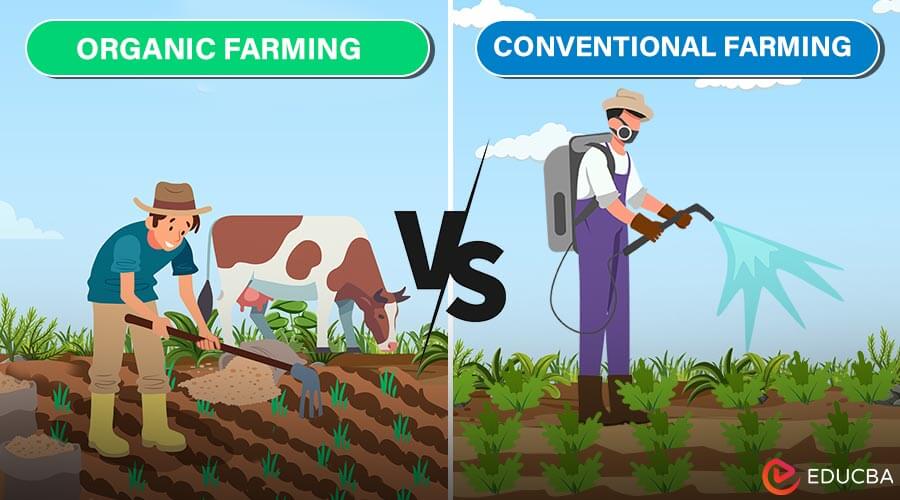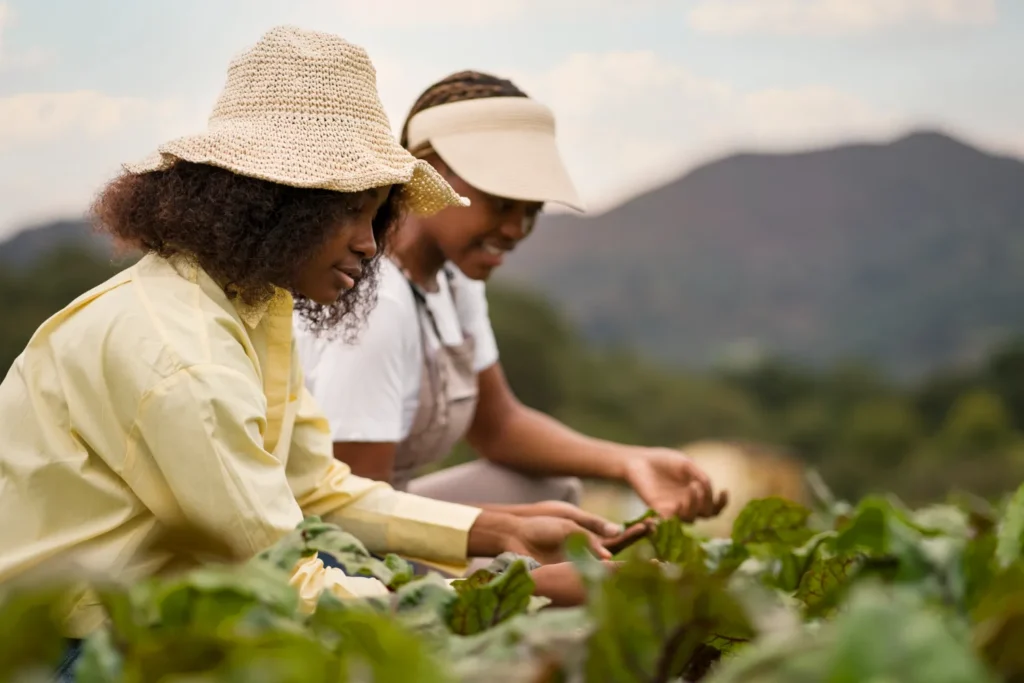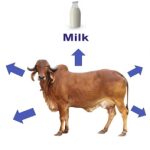Are you tired of relying on chemical fertilizers and pesticides to boost your farm’s yield? Do you worry about the long-term effects these chemicals might have on your soil, crops, and health?
Imagine transforming your farming practices into something that not only benefits the environment but also enhances the quality of your produce. Transitioning from chemical to organic farming might seem daunting, but it’s a change that promises healthier crops, better soil, and a more sustainable future for your farm.
In this guide, you’ll discover simple, actionable steps to make this shift smoothly and effectively. Curious about how you can make a positive impact on your land and community? Keep reading to unlock the secrets to successful organic farming.
Benefits Of Organic Farming
Organic farming offers numerous advantages over chemical farming. It nurtures the soil and promotes biodiversity. Organic methods help in producing healthier crops. They also reduce exposure to harmful chemicals. Farmers and consumers benefit from this healthier approach.
Improved Soil Health
Organic farming enhances soil quality. Natural compost and manure enrich the soil. They boost nutrients and improve structure. Healthy soil leads to better water retention. This reduces erosion and promotes plant growth.
Environmental Protection
Organic farming helps protect ecosystems. It reduces pollution by avoiding synthetic fertilizers. Natural pest control methods reduce harmful chemical use. This promotes cleaner air and water. Wildlife thrives in these healthier environments.
Enhanced Biodiversity
Organic farms support diverse plant and animal species. Crop rotation and mixed planting encourage variety. This diversity helps balance pests and diseases. It promotes a healthier ecosystem. Enhanced biodiversity benefits both nature and farming.
Safer Food Products
Organic farming produces safer foods. It avoids chemical residues in crops. Organic produce reduces health risks for consumers. It offers cleaner, more nutritious options. Many people prefer organic for its purity.
Economic Benefits
Organic farming can be economically rewarding. It often attracts premium prices in the market. Consumers are willing to pay more for organic products. This can increase farm income. Sustainable practices also reduce long-term costs.
Community Well-being
Organic farming strengthens local communities. It fosters close relationships between farmers and consumers. Communities become more engaged in healthy eating. Organic farms often support local economies. This builds stronger bonds among community members.
Assessing Soil Health
Transitioning to organic farming involves assessing soil health. Healthy soil supports plant growth and reduces chemical dependency. Regular testing reveals nutrient levels, guiding natural soil enhancements.
Transitioning from chemical to organic farming is an exciting journey that begins with understanding your soil’s health. The soil is the foundation of your farm’s productivity and quality. By assessing its current condition, you can make informed decisions that benefit both your crops and the environment. It’s not just about swapping chemicals for organic methods; it’s about knowing what your soil truly needs to thrive.Understanding Soil Composition
Start by examining the components of your soil. Is it sandy, clay-rich, or loamy? Each type has different water retention and nutrient profiles. Knowing this helps you choose the right organic amendments. Run basic tests to check pH levels. A healthy soil pH is crucial for nutrient availability. You can use simple kits available at gardening stores for this.Checking Nutrient Levels
Assess the nutrient content of your soil. Essential nutrients like nitrogen, phosphorus, and potassium are key for plant growth. Organic farming relies heavily on these nutrients being naturally present. Consider using a professional soil testing service. They provide detailed reports that can guide your organic fertilization plan.Evaluating Soil Structure
Look at the soil’s texture and structure. Good soil has a crumbly texture that allows roots to penetrate easily. Compacted soil can hinder growth and needs attention. Tilling can improve structure, but remember to do it gently. Over-tilling can cause harm and should be avoided.Analyzing Organic Matter
Check the level of organic matter in your soil. Organic matter is vital for water retention and nutrient supply. High levels indicate healthy soil with good microbial activity. You can boost organic matter by adding compost or green manure. Regular additions can sustain soil health over time.Monitoring Soil Life
Observe the presence of earthworms and microbes. These organisms are indicators of healthy soil. They help break down organic matter and improve soil aeration. If your soil lacks life, consider adding organic matter or using cover crops. These methods can rejuvenate the ecosystem in your soil. Engage with your soil actively. Ask yourself: What changes can I make today to improve its health? Small adjustments can lead to significant improvements over time. Transitioning to organic farming is about nurturing your soil, not just changing practices. What you learn from your soil today shapes your farm’s future.Choosing Organic Inputs
Choosing organic inputs is crucial for transitioning from chemical to organic farming. These inputs help maintain soil health and support sustainable agriculture. Farmers must select suitable organic fertilizers, pesticides, and seeds. These choices impact the farm’s ecosystem and productivity.
Understanding Organic Fertilizers
Organic fertilizers enrich soil naturally. They release nutrients slowly, improving soil structure. Common types include compost, manure, and bone meal. These fertilizers boost plant growth without harming the environment. They also increase soil biodiversity, benefiting crops.
Exploring Organic Pesticides
Organic pesticides protect crops naturally. They control pests without toxic chemicals. Neem oil, diatomaceous earth, and insecticidal soap are popular options. These pesticides are safe for beneficial insects. They reduce environmental harm and promote healthy ecosystems.
Choosing Organic Seeds
Organic seeds are untreated and non-GMO. They adapt well to organic farming systems. Selecting the right seeds ensures better yields. Heirloom and open-pollinated seeds offer diversity. They help maintain genetic variety in crops, which is vital for resilience.
Evaluating Soil Health
Healthy soil is the foundation of organic farming. Regular testing helps determine nutrient levels. It guides the choice of organic inputs needed. Soil amendments like lime or gypsum can adjust pH levels. Balanced soil promotes robust plant growth.
Crop rotation prevents soil depletion. It reduces pest and disease buildup. Rotating crops improves soil fertility naturally. Different plants use and replenish various nutrients. This practice supports sustainable farming.

Implementing Crop Rotation
Transitioning to organic farming involves adopting crop rotation, which helps replenish soil nutrients naturally. This practice reduces reliance on chemical fertilizers, promoting healthier and more sustainable agricultural practices. It enhances soil structure and biodiversity, paving the way for a successful shift to organic methods.
Transitioning from chemical to organic farming is a rewarding journey, but it requires careful planning and adjustment. One of the most effective techniques in organic farming is implementing crop rotation. This practice not only enhances soil health but also naturally manages pests and diseases. By rotating crops, you give your soil a chance to rejuvenate, thereby increasing its fertility and productivity. ###What Is Crop Rotation?
Crop rotation involves changing the type of crop grown in a specific area each season. This breaks the cycle of pests and diseases that thrive on particular crops. For example, after harvesting a nitrogen-depleting crop like corn, you might plant legumes such as beans, which add nitrogen back into the soil. ###Benefits Of Crop Rotation
Rotating crops helps maintain soil structure and fertility. This practice reduces reliance on chemical fertilizers and improves overall farm sustainability. It also helps in managing weeds naturally, which can otherwise become resistant to chemical herbicides. ###Steps To Implement Crop Rotation
1. Plan Your Crop Sequence: Determine which crops will follow each other. Consider crops that complement each other in terms of nutrient needs. 2. Monitor Soil Health: Regularly test your soil to understand its nutrient needs. Use this information to adjust your rotation plan. 3. Record Keeping: Keep detailed records of what you plant and when. This helps in planning future rotations and identifying patterns. ###Common Mistakes To Avoid
Avoid planting crops from the same family in succession. This can lead to pest and disease buildup. Also, don’t forget to consider the market demand for your chosen crops. ###Personal Experience With Crop Rotation
On my first attempt at crop rotation, I made the mistake of not considering the growth cycle of each crop. It led to a mismatch in harvesting times. Planning ahead and understanding each crop’s needs is crucial. ###Is Crop Rotation Right For Your Farm?
Consider the size of your farm and the variety of crops you can grow. Are you ready to manage a diverse planting schedule? Crop rotation requires commitment but offers a sustainable path to healthier soil and better yields. Transitioning to organic farming is a significant step, and crop rotation can play a crucial role in your success. Are you ready to embrace this change for a more sustainable future?
Conclusion
Switching to organic farming benefits the environment and your health. It involves patience, learning, and dedication. Start small, and gradually reduce chemical use. Focus on soil health and natural pest control. Seek support from experienced organic farmers. They can offer valuable advice.
Stay informed about organic practices and regulations. The journey may be challenging, but rewarding. Your efforts will lead to healthier crops and sustainable farming. Remember, every small step counts towards a greener future. Stay committed, and enjoy the fruits of your labor.
Your farm, and the planet, will thank you.


